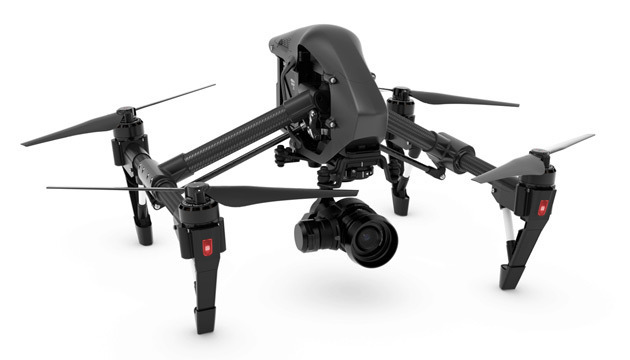The U.S. Transportation Department has confirmed Apple is one of a number of major tech firms taking part in a drone program, an initiative that could help the U.S. government decide how to regulate unmanned aircraft used for commercial purposes.
Formally announced on Wednesday, the program consists of ten projects across the United States where drones will be used for commercial purposes, beyond the existing testing that the U.S. Federal Aviation Administration currently permits. Reuters reports Apple has been identified as one technology company participating in one of the selected projects, working with a firm in North Carolina.
Apple's participation in the project is intended to help improve Apple Maps, most likely by taking high-resolution images from the drone, which could be used to acquire data on road layout changes and increase the quality of the app's Flyover feature. It is claimed sensitive subjects, such as faces and license plate numbers, will be blurred in the images, in alignment with the company's stance on privacy.
Other projects given the green light include the startup Flirtey flying medical equipment to heart attack victims in Nevada, and the use of a 1,500-pound drone to monitor mosquitos in Florida. A total of 149 bids were submitted to the contest, which would allow night deliveries, flights over people, and other types of airborne activities currently banned for drones.
Apple isn't the only company with a winning project, with Intel, Uber, Microsoft, FedEx, and Airbus also among the successful applicants.
Notable declined projects include Amazon project for drone deliveries in New York, which would have expanded the online retailer's existing air-based trials. Chinese drone maker DJI was involved with around a dozen applications, but they were all rejected.
The U.S. Transportation Secretary Elaine Chao advised more projects could be allowed to proceed in the next few months, under new waivers or with plans modified to work under current regulations. Deputy Transportation Secretary Jeff Rosen insists there was a "rigorous process" for selecting the successful candidates, and that there were "no losers."
Apple does have experience with drones outside retail, reportedly for updating Apple Maps data alongside its slower fleet of Google-style minivans. Other drone applications Apple may be interested in include deliveries and facility monitoring efforts, though there has yet to be any strong rumors of a drone-related Apple project.
The company's main interest in autonomous vehicles is thought to be its self-driving car platform — and even then its goal is believed to be partnership with one or more ride-hailing firms, rather than an "Apple Car."
 Malcolm Owen
Malcolm Owen







-m.jpg)






 Charles Martin
Charles Martin
 Christine McKee
Christine McKee
 Wesley Hilliard
Wesley Hilliard

 Andrew Orr
Andrew Orr
 William Gallagher
William Gallagher
 Sponsored Content
Sponsored Content








7 Comments
I bet Mr. Bezos is kicking some butts after this. I am sure Amazon will succeed in the end though. I do wonder how Amazon will train the drones to open the screen door on our front porch so they can leave the parcels inside and under cover though. I am assuming some sort of arm on the front with a dextrous mechanical hand?
One of the things I'm curious about with regard to drone deliveries is how they will manage to avoid wires, like on telephone poles. Our street is tree lined on one side and has power/cable/phone lines on the other side. Everyone has a fairly small front yard and trees in the back yard. In my neighborhood our house is the only one that is connected via underground conduit, all of the other houses on our street have wires hung from the pole to the house and there's no rhyme or reason to how they are connected, each house is slightly different and may have multiple points of connection (a line for power and a differently placed line for cable). How will drones contend with this type of scenario and not end up crashing by flying into these relatively low and small and thus harder to see lines? I don't think my situation is atypical. Granted there are homes that have far fewer obstructions that would be easy to identify and avoid but not all areas will be like that.
Apple blew it.
AirPod - An autonomous single passenger drone for personal transportation.
Instead they wasted the name on a stupid headphone. /s
@Ihatescreennames Sorry 'Quote" isn't working for me on AI website at the moment, no idea why not ... I agree the wire thing is an interesting question. Perhaps we are using a 'human vision perspective' and maybe a drone's AI could detect them through a range of methods that use data far beyond human ability to perceive, e.g. I bet power and phone lines emit a lot of electro magnetic signatures. A clothes line maybe not so much though but then again their acuity maybe very much higher, like a hawk's .